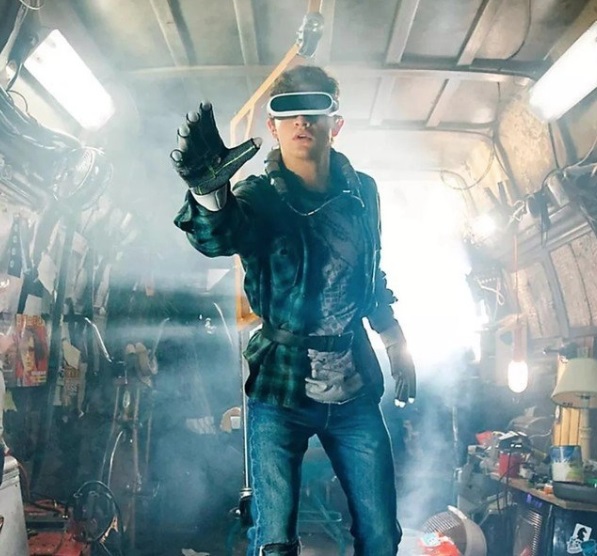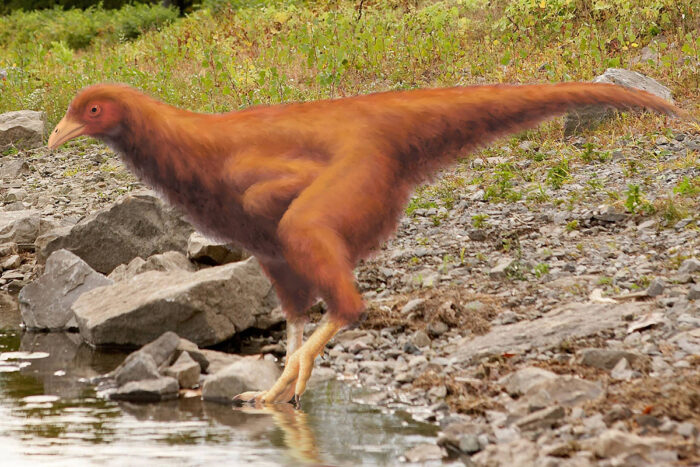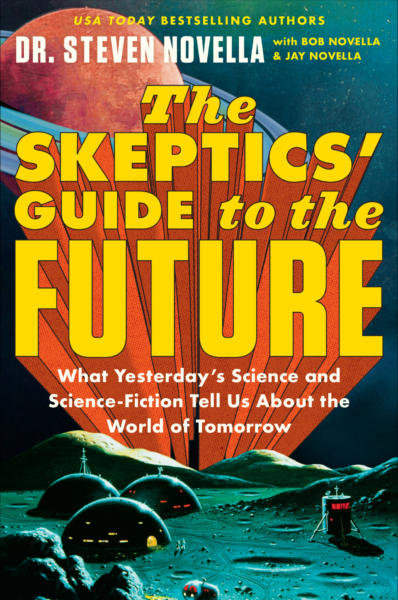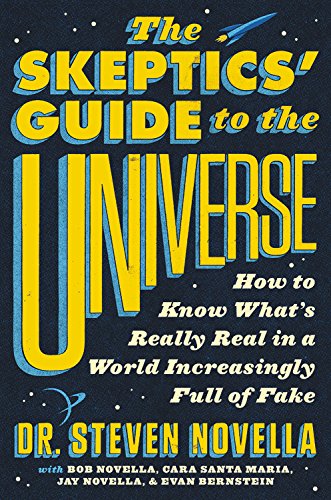Apr
29
2025
In my previous post I wrote about how we think about and talk about autism spectrum disorder (ASD), and how RFK Jr misunderstands and exploits this complexity to weave his anti-vaccine crank narrative. There is also another challenge in the conversation about autism, which exists for many diagnoses – how do we talk about it in a way that is scientifically accurate, useful, and yet not needlessly stigmatizing or negative? A recent NYT op-ed by a parent of a child with profound autism had this to say:
“Many advocacy groups focus so much on acceptance, inclusion and celebrating neurodiversity that it can feel as if they are avoiding uncomfortable truths about children like mine. Parents are encouraged not to use words like “severe,” “profound” or even “Level 3” to describe our child’s autism; we’re told those terms are stigmatizing and we should instead speak of “high support needs.” A Harvard-affiliated research center halted a panel on autism awareness in 2022 after students claimed that the panel’s language about treating autism was “toxic.” A student petition circulated on Change.org said that autism ‘is not an illness or disease and, most importantly, it is not inherently negative.'”
I’m afraid there is no clean answer here, there are just tradeoffs. Let’s look at this question (essentially, how do we label ASD) from two basic perspectives – scientific and cultural. You may think that a purely scientific approach would be easier and result in a clear answer, but that is not the case. While science strives to be objective, the universe is really complex, and our attempts at making it understandable and manageable through categorization involve subjective choices and tradeoffs. As a physician I have had to become comfortable with this reality. Diagnoses are often squirrelly things.
When the profession creates or modifies a diagnosis, this is really a type of categorization. There are different criteria that we could potentially use to define a diagnostic label or category. We could use clinical criteria – what are the signs, symptoms, demographics, and natural history of the diagnosis in question? This is often where diagnoses begin their lives, as a pure description of what is being seen in the clinic. Clinical entities almost always present as a range of characteristics, because people are different and even specific diseases will manifest differently. The question then becomes – are we looking at one disease, multiple diseases, variations on a theme, or completely different processes that just overlap in the signs and symptoms they cause. This leads to the infamous “lumper vs splitter” debate – do we tend to lump similar entities together in big categories or split everything up into very specific entities, based on even tiny differences?
Continue Reading »
Apr
28
2025

RFK Jr.’s recent speech about autism has sparked a lot of deserved anger. But like many things in life, it’s even more complicated than you think it is, and this is a good opportunity to explore some of the issues surrounding this diagnosis.
While the definition has shifted over the years (like most medical diagnoses) autism is currently considered a fairly broad spectrum sharing some underlying neurological features. At the most “severe” end of the spectrum (and to show you how fraught this issue is, even the use of the term “severe” is controversial) people with autism (or autism spectrum disorder, ASD) can be non-verbal or minimally verbal, have an IQ <50, and require full support to meet their basic daily needs. At the other end of the spectrum are extremely high-functioning individuals who are simply considered to be not “neurotypical” because they have a different set of strengths and challenges than more neurotypical people. One of the primary challenges is to talk about the full spectrum of ASD under one label. The one thing it is safe to say is that RFK Jr. completely failed this challenge.
What our Health and Human Services Secretary said was that normal children:
“regressed … into autism when they were 2 years old. And these are kids who will never pay taxes, they’ll never hold a job, they’ll never play baseball, they’ll never write a poem, they’ll never go out on a date. Many of them will never use a toilet unassisted.”
This is classic RFK Jr. – he uses scientific data like the proverbial drunk uses a lamppost, for support rather than illumination. Others have correctly pointed out that he begins with his narrative and works backward (like a lawyer, because that is what he is). That narrative is solidly in the sweet-spot of the anti-vaccine narrative on autism, which David Gorski spells out in great detail here. RFK said:
“So I would urge everyone to consider the likelihood that autism, whether you call it an epidemic, a tsunami, or a surge of autism, is a real thing that we don’t understand, and it must be triggered or caused by environmental or risk factors. “
In RFK’s world, autism is a horrible disease that destroys children and families and is surging in such a way that there must be an “environmental” cause (wink, wink – we know he means vaccines). But of course RFK gets the facts predictable wrong, or at least exaggerated and distorted precisely to suit his narrative. It’s a great example of how to support a desired narrative by cherry picking and then misrepresenting facts. To use another metaphor, it’s like making one of those mosaic pictures out of other pictures. He may be choosing published facts but he arranges them into a false and illusory picture. RFK cited a recent study that showed that about 25% of children with autism were in the “profound” category. (That is another term recently suggested to refer to autistic children who are minimally verbal or have an IQ < 50. This is similar to “level 3” autism or “severe” autism, but with slightly different operational cutoffs.)
Continue Reading »
Apr
24
2025
 Regulations are a classic example of a proverbial double-edged sword. They are essential to create and maintain a free and fair market, to prevent exploitation, and to promote safety and the public interest. Just look at 19th century America for countless examples of what happens without proper regulations (child labor, cities ablaze, patent medicines, and food was a crap shoot). But, regulations can have a powerful effect and this includes unintended consequences, regulatory overreach, ideological capture, and stifling bureaucracy. This is why optimal regulations should be minimalist, targeted, evidence-based, consensus-driven, and open to revision. This makes regulations also a classic example of Aristotle’s rule of the “golden mean”. Go too far to either extreme (too little or to onerous) and regulations can be a net negative.
Regulations are a classic example of a proverbial double-edged sword. They are essential to create and maintain a free and fair market, to prevent exploitation, and to promote safety and the public interest. Just look at 19th century America for countless examples of what happens without proper regulations (child labor, cities ablaze, patent medicines, and food was a crap shoot). But, regulations can have a powerful effect and this includes unintended consequences, regulatory overreach, ideological capture, and stifling bureaucracy. This is why optimal regulations should be minimalist, targeted, evidence-based, consensus-driven, and open to revision. This makes regulations also a classic example of Aristotle’s rule of the “golden mean”. Go too far to either extreme (too little or to onerous) and regulations can be a net negative.
The regulations of GMOs are an example, in my opinion, of ideological capture in regulations. The US, actually, has pretty good regulations, requiring study and approval for each new GMO product on the market, but no outright banning. You could argue that they are a bit too onerous to be optimal, ensuring that only large companies can afford to usher a new GMO product to the market, and therefore stifling competition from smaller companies. That’s one of those unintended consequences. Some states, like Hawaii and Vermont, have instituted their own more restrictive regulations, based purely on ideology and not science or evidence. Europe is another story, with highly restrictive regulations on GMOs.
But in recent years scientific advances in genetics have cracked the door open for genetic modification in highly regulated environments. This is similar to what happened with stem cell research in the US. Use of embryonic stem cells were ideologically controversial, and ultimately the development of any new cells lines was banned by Bush in 2001. Scientists then discovered how to convert adult cells into induced pluripotent stem cells, mostly side-stepping these regulations.
Continue Reading »
Apr
21
2025
 Have you ever been into a video game that you played for hours a day for a while? Did you ever experience elements of game play bleeding over into the real world? If you have, then you have experienced what psychologists call “game transfer phenomenon” or GTP. This can be subtle, such as unconsciously placing your hand on the AWSD keys on a keyboard, or more extreme such as imagining elements of the game in the real world, such as health bars over people’s heads.
Have you ever been into a video game that you played for hours a day for a while? Did you ever experience elements of game play bleeding over into the real world? If you have, then you have experienced what psychologists call “game transfer phenomenon” or GTP. This can be subtle, such as unconsciously placing your hand on the AWSD keys on a keyboard, or more extreme such as imagining elements of the game in the real world, such as health bars over people’s heads.
None of this is surprising, actually. Our brains adapt to use. Spend enough time in a certain environment, engaging in a specific activity, experiencing certain things, and these pathways will be reinforced. This is essentially what PTSD is – spend enough time fighting for your life in extremely violent and deadly situations, and the behaviors and associations you learn are hard to turn off. I have experienced only a tiny whisper of this after engaging for extended periods of time in live-action gaming that involves some sort of combat (like paint ball or LARPing) – it may take a few days for you to stop looking for threats and being jumpy.
I have also noticed a bit of transfer (and others have noted this to me as well) in that I find myself reaching to pause or rewind a live radio broadcast because I missed something that was said. I also frequently try to interact with screens that are not touch-screens. I am getting used to having the ability to affect my physical reality at will.
Now there is a new wrinkle to this phenomenon – we have to consider the impact of spending more and more time engaged in virtual experiences. This will only get more profound as virtual reality becomes more and more a part of our daily routine. I am also thinking about the not-to-distant future and beyond, where some people might spend huge chunks of their day in VR. Existing research shows that GTP is more likely to occur with increased time and immersiveness. What happens when our daily lives are a blend of the virtual and the physical? Not only is there VR, there is augmented reality (AR) where we overlay digital information onto our perception of the real world. This idea was explored in a Dr. Who episode in which a society of people were so dependent on AR that they were literally helpless without it, unable to even walk from point A to B.
Continue Reading »
Apr
17
2025
 Exoplanets are pretty exciting – in the last few decades we have gone from knowing absolutely nothing about planets beyond our solar system to having a catalogue of over 5,000 confirmed exoplanets. That’s still a small sample considering there are likely between 100 billion and 1 trillion planets in the Milky Way. It is also not a random sample, but is biased by our detection methods, which favor larger planets closer to their parent stars. Still, some patterns are starting to emerge. One frustrating pattern is the lack of any worlds that are close duplicates of Earth – an Earth mass exoplanet in the habitable zone of a yellow star (I’d even take an orange star).
Exoplanets are pretty exciting – in the last few decades we have gone from knowing absolutely nothing about planets beyond our solar system to having a catalogue of over 5,000 confirmed exoplanets. That’s still a small sample considering there are likely between 100 billion and 1 trillion planets in the Milky Way. It is also not a random sample, but is biased by our detection methods, which favor larger planets closer to their parent stars. Still, some patterns are starting to emerge. One frustrating pattern is the lack of any worlds that are close duplicates of Earth – an Earth mass exoplanet in the habitable zone of a yellow star (I’d even take an orange star).
Life, however, does not require an Earth-like planet. Anything in the habitable zone, defined as potentially having a temperature allowing for liquid water on its surface, will do. The habitable zone also depends on variables such as the atmosphere of the planet. Mars could be warm if it had a thicker atmosphere, and Venus could be habitable if it had less of one. Cataloguing exoplanets gives us the ability to address a burning scientific question – how common is life in the universe? We have yet to add any data points of clear examples of life beyond Earth. So far we have one example of life in the universe, which means we can’t calculate how common it is (except maybe setting some statistical upper limits).
Finding that a planet is habitable and therefore could potentially support life is not enough. We need evidence that there is actually life there. For this the hunt for exoplanets includes looking for potential biosignatures – signs of life. We may have just found the first biosignatures on an exoplanet. This is not 100%. We need more data. But it is pretty intriguing.
The planet is K2-18b, a sub-Neptune orbiting a red dwarf 120 light years from Earth. In terms of exoplanet size, we have terrestrial planets like Earth and the rocky inner planets of our solar system. Then there are super-Earths, larger than Earth up to about 2 earth masses, still likely rocky worlds. Sub Neptunes are larger still, but still smaller than Neptune. They likely have rocky surfaces and thick atmospheres. K2-18b has a radius 2.6 times that of Earth, with a mass 8.6 times that of Earth. The surface gravity is estimated at 12.43 m/s^2 (compared to 9.8 on Earth). We could theoretically land a rocket and take off again from its surface.
Continue Reading »
Apr
14
2025
 Last week I wrote about the de-extinction of the dire wolf by a company, Colossal Biosciences. What they did was pretty amazing – sequence ancient dire wolf DNA and use that as a template to make 20 changes to 14 genes in the gray wolf genome via CRISPR. They focused on the genetic changes they thought would have the biggest morphological effect, so that the resulting pups would look as much as possible like the dire wolves of old.
Last week I wrote about the de-extinction of the dire wolf by a company, Colossal Biosciences. What they did was pretty amazing – sequence ancient dire wolf DNA and use that as a template to make 20 changes to 14 genes in the gray wolf genome via CRISPR. They focused on the genetic changes they thought would have the biggest morphological effect, so that the resulting pups would look as much as possible like the dire wolves of old.
This achievement, however, is somewhat tainted by overhyping what was actually achieved, by the company and many media outlets. Although the pushback began immediately, and there is plenty of reporting about the fact that these are not exactly dire wolves (as I pointed out myself). I do think we should not fall into the pattern of focusing on the controversy and the negative and missing the fact that this is a genuinely amazing scientific accomplishment. It is easy to become blase about such things. Sometimes it’s hard to know in reporting what the optimal balance is between the positive and the negative, and as skeptics we definitely can tend toward the negative.
I feel the same way, for example, about artificial intelligence. Some of my skeptical colleagues have taken the approach that AI is mostly hype, and focusing on what the recent crop of AI apps are not (they are not sentient, they are not AGI), rather than what they are. In both cases I think it’s important to remember that science and pseudoscience are a continuum, and just because something is being overhyped does not mean it gets tossed in the pseudoscience bucket. That is just another form of bias. Sometimes that amounts to substituting cynicism for more nuanced skepticism.
Continue Reading »
Apr
11
2025
 We may have a unique opportunity to make an infrastructure investment that can demonstrably save money over the long term – by burying power and broadband lines. This is always an option, of course, but since we are in the early phases of rolling out fiber optic service, and also trying to improve our grid infrastructure with reconductoring, now may be the perfect time to also upgrade our infrastructure by burying much of these lines.
We may have a unique opportunity to make an infrastructure investment that can demonstrably save money over the long term – by burying power and broadband lines. This is always an option, of course, but since we are in the early phases of rolling out fiber optic service, and also trying to improve our grid infrastructure with reconductoring, now may be the perfect time to also upgrade our infrastructure by burying much of these lines.
This has long been a frustration of mine. I remember over 40 years ago seeing new housing developments (my father was in construction) with all the power lines buried. I hadn’t realized what a terrible eye sore all those telephone poles and wires were until they were gone. It was beautiful. I was lead to believe this was the new trend, especially for residential areas. I looked forward to a day without the ubiquitous telephone poles, much like the transition to cable eliminated the awful TV antennae on top of every home. But that day never came. Areas with buried lines remained, it seems, a privilege of upscale neighborhoods. I get further annoyed every time there is a power outage in my area because of a downed line.
The reason, ultimately, had to be cost. Sure, there are lots of variables that determine that cost, but at the end of the day developers, towns, utility companies were taking the cheaper option. But what price do we place on the aesthetics of the places we live, and the inconvenience of regular power outages? I also hate the fact that the utility companies have to come around every year or so and carve ugly paths through large beautiful trees.
Continue Reading »
Apr
08
2025
 This really is just a coincidence – I posted yesterday about using AI and modern genetic engineering technology, with one application being the de-extinction of species. I had not seen the news from yesterday about a company that just announced it has cloned three dire wolves from ancient DNA. This is all over the news, so here is a quick recap before we discuss the implications.
This really is just a coincidence – I posted yesterday about using AI and modern genetic engineering technology, with one application being the de-extinction of species. I had not seen the news from yesterday about a company that just announced it has cloned three dire wolves from ancient DNA. This is all over the news, so here is a quick recap before we discuss the implications.
The company, Colossal Biosciences, has long announced its plans to de-extinct the woolly mammoth. This was the company that recently announced it had made a woolly mouse by inserting a gene for wooliness from recovered woolly mammoth DNA. This was a proof-of-concept demonstration. But now they say they have also been working on the dire wolf, a species of wolf closely related to the modern gray wolf that went extinct 13,000 years ago. We mostly know about them from skeletons found in the Le Brea tar pits (some of which are on display at my local Peabody Museum). Dire wolves are about 20% bigger than gray wolves, have thicker lighter coats, and are more muscular. They are the bad-ass ice-age version of wolves that coexisted with saber-toothed tigers and woolly mammoths.
The company was able to recover DNA from 13,000 year old tooth and a 72,000 year old skull. With that DNA they engineered wolf DNA at 20 sites over 14 genes, then used that DNA to fertilize an egg which they gestated in a dog. They actually did this twice, the first time creating two males, Romulus and Remus (now six months old), and the second time making one female, Kaleesi (now three months old). The wolves are kept in a reserve. The company says they have no current plan to breed them, but do plan to make more in order to create a full pack to study pack behavior.
Continue Reading »
Apr
07
2025
I think it’s increasingly difficult to argue that the recent boom in artificial intelligence (AI) is mostly hype. There is a lot of hype, but don’t let that distract you from the real progress. The best indication of this is applications in scientific research, because the outcomes are measurable and objective. AI applications are particularly adept at finding patterns in vast sets of data, finding patterns in hours that might have required months of traditional research. We recently discussed on the SGU using AI to sequence proteins, which is the direction that researchers are going in. Compared to the traditional method using AI analysis is faster and better at identifying novel proteins (not already in the database).
One SGU listener asked an interesting question after our discussion of AI and protein sequencing that I wanted to explore – can we apply the same approach to DNA and can this result in reverse-engineering the genetic sequence from the desired traits? AI is already transforming genetic research. AI apps allow for faster, cheaper, and more accurate DNA sequencing, while also allowing for the identification of gene variants that correlate with a disease or a trait. Genetics is in the sweet spot for these AI applications – using large databases to find meaningful patterns. How far will this tech go, and how quickly.
We have already sequenced the DNA of over 3,000 species. This number is increasing quickly, accelerated by AI sequencing techniques. We also have a lot of data about gene sequences and the resulting proteins, non-coding regulatory DNA, gene variants and disease states, and developmental biology. If we trained an AI on all this data, could it then make predictions about the effects of novel gene variants? Could it also go from a desired morphological trait back to the genetic sequence that would produce that trait? Again, this sounds like the perfect application for AI.
Continue Reading »
Apr
04
2025
 Yes – it is well-documented that in many industries the design of products incorporates a plan for when the product will need to be replaced. A blatant example was in 1924 when an international meeting of lightbulb manufacturers decided to limit the lifespan of lightbulbs to 1,000 hours, so that consumers would have to constantly replace them. This artificial limitation did not end until CFLs and then LED lightbulbs largely replaced incandescent bulbs.
Yes – it is well-documented that in many industries the design of products incorporates a plan for when the product will need to be replaced. A blatant example was in 1924 when an international meeting of lightbulb manufacturers decided to limit the lifespan of lightbulbs to 1,000 hours, so that consumers would have to constantly replace them. This artificial limitation did not end until CFLs and then LED lightbulbs largely replaced incandescent bulbs.
But – it’s more complicated than you might think (it always is). Planned obsolescence is not always about gimping products so they break faster. It often is – products are made so they are difficult to repair or upgrade and arbitrary fashions change specifically to create demand for new versions. But often there is a rational decision to limit product quality. Some products, like kids’ clothes, have a short use timeline, so consumers prefer cheap to durable. There is also a very good (for the consumer) example of true obsolescence – sometimes the technology simply advances, offering better products. Durability is not the only nor the primary attribute determining the quality of a product, and it makes no sense to build in expensive durability for a product that consumers will want to replace. So there is a complex dynamic among various product features, with durability being only one feature.
We can also ask the question, for any product or class of products, is durability actually decreasing over time? Consumers are now on the alert for planned obsolescence, and this may produce the confirmation bias of seeing it everywhere, even when it’s not true. A recent study looking at big-ticket appliances shows how complex this question can be. This is a Norwegian study looking at the lifespan of large appliances over decades, starting in the 1950s.
First, they found that for most large appliances, there was no decrease in lifespan over this time period. So the phenomenon simply did not exist for the items that homeowning consumers care the most about, their expensive appliances. There were two exceptions, however – ovens and washing machines. Each has its own explanations.
Continue Reading »


 Regulations are a classic example of a proverbial double-edged sword. They are essential to create and maintain a free and fair market, to prevent exploitation, and to promote safety and the public interest. Just look at 19th century America for countless examples of what happens without proper regulations (child labor, cities ablaze, patent medicines, and food was a crap shoot). But, regulations can have a powerful effect and this includes unintended consequences, regulatory overreach, ideological capture, and stifling bureaucracy. This is why optimal regulations should be minimalist, targeted, evidence-based, consensus-driven, and open to revision. This makes regulations also a classic example of Aristotle’s rule of the “golden mean”. Go too far to either extreme (too little or to onerous) and regulations can be a net negative.
Regulations are a classic example of a proverbial double-edged sword. They are essential to create and maintain a free and fair market, to prevent exploitation, and to promote safety and the public interest. Just look at 19th century America for countless examples of what happens without proper regulations (child labor, cities ablaze, patent medicines, and food was a crap shoot). But, regulations can have a powerful effect and this includes unintended consequences, regulatory overreach, ideological capture, and stifling bureaucracy. This is why optimal regulations should be minimalist, targeted, evidence-based, consensus-driven, and open to revision. This makes regulations also a classic example of Aristotle’s rule of the “golden mean”. Go too far to either extreme (too little or to onerous) and regulations can be a net negative. Have you ever been into a video game that you played for hours a day for a while? Did you ever experience elements of game play bleeding over into the real world? If you have, then you have experienced what psychologists call “
Have you ever been into a video game that you played for hours a day for a while? Did you ever experience elements of game play bleeding over into the real world? If you have, then you have experienced what psychologists call “ Exoplanets are pretty exciting – in the last few decades we have gone from knowing absolutely nothing about planets beyond our solar system to having a catalogue of over 5,000 confirmed exoplanets. That’s still a small sample considering there are likely between 100 billion and 1 trillion planets in the Milky Way. It is also not a random sample, but is biased by our detection methods, which favor larger planets closer to their parent stars. Still, some patterns are starting to emerge. One frustrating pattern is the lack of any worlds that are close duplicates of Earth – an Earth mass exoplanet in the habitable zone of a yellow star (I’d even take an orange star).
Exoplanets are pretty exciting – in the last few decades we have gone from knowing absolutely nothing about planets beyond our solar system to having a catalogue of over 5,000 confirmed exoplanets. That’s still a small sample considering there are likely between 100 billion and 1 trillion planets in the Milky Way. It is also not a random sample, but is biased by our detection methods, which favor larger planets closer to their parent stars. Still, some patterns are starting to emerge. One frustrating pattern is the lack of any worlds that are close duplicates of Earth – an Earth mass exoplanet in the habitable zone of a yellow star (I’d even take an orange star). Last week
Last week We may have a unique opportunity to make an infrastructure investment that can demonstrably save money over the long term – by burying power and broadband lines. This is always an option, of course, but since we are in the early phases of rolling out fiber optic service, and also trying to improve our grid infrastructure
We may have a unique opportunity to make an infrastructure investment that can demonstrably save money over the long term – by burying power and broadband lines. This is always an option, of course, but since we are in the early phases of rolling out fiber optic service, and also trying to improve our grid infrastructure  This really is just a coincidence –
This really is just a coincidence –  Yes –
Yes – 




